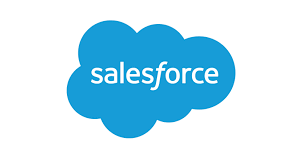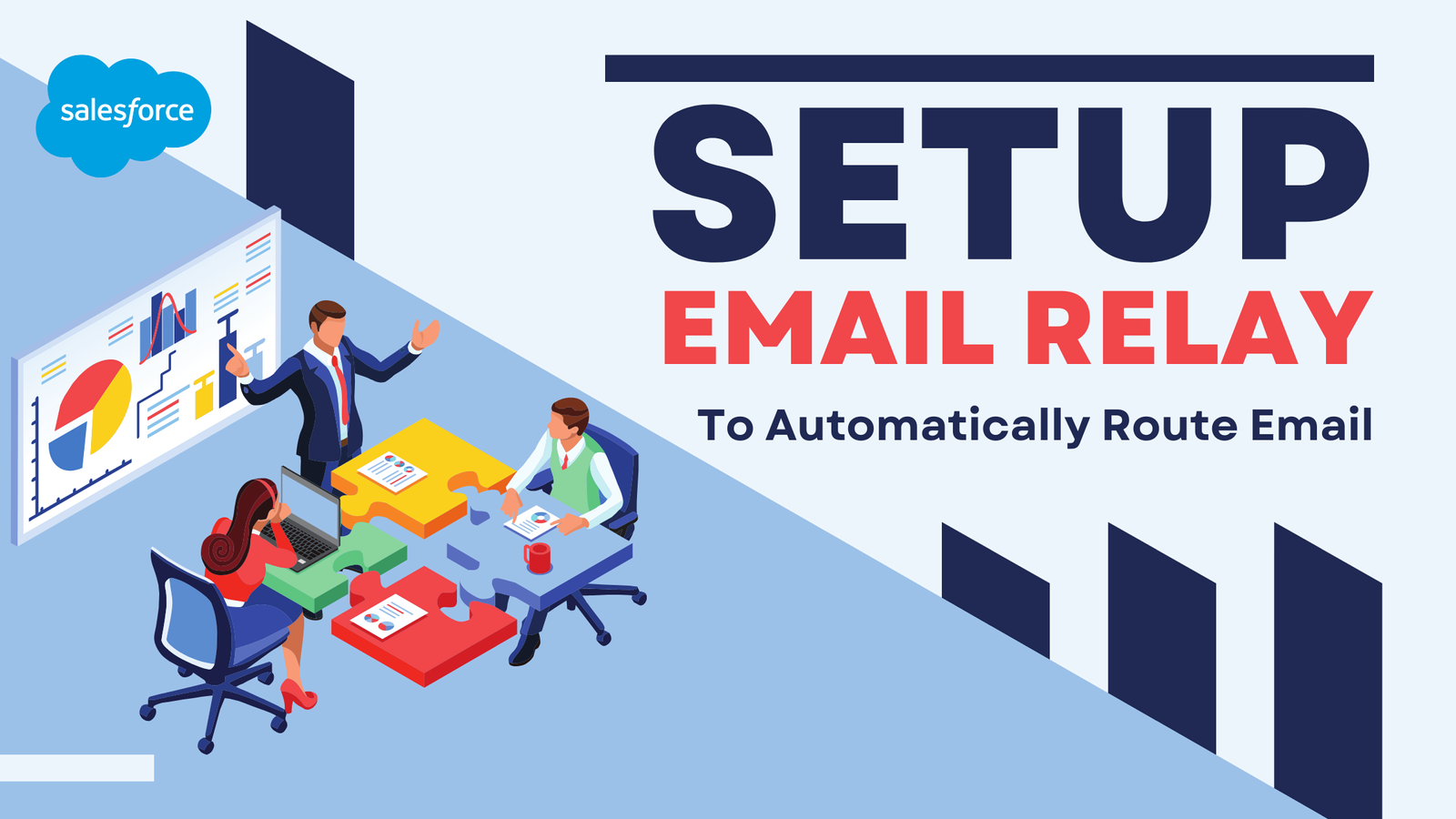
How to Setup Email Relay To Automatically in Salesforce
What does email relay entail within the Salesforce platform
Setup Email relay is a mechanism facilitating the transfer of emails from one server to another. It’s essential to differentiate between Salesforce’s native SMTP (Simple Mail Transfer Protocol) server and its Email Relay functionality.
Salesforce’s native SMTP server directly sends (relays) emails from the platform. On the other hand, the Email Relay feature empowers users to configure a third-party SMTP or employ their own setup while still utilizing Salesforce for email creation.
This feature enables routing emails through integrated servers, granting users enhanced control over email delivery for each domain they manage. Additionally, it provides better visibility into crucial metrics such as opens, bounces, and spam complaints.
What is the functionality of email relay within Salesforce
Salesforce’s Email Relay feature facilitates the transmission of emails generated by your company’s SMTP server.
This mechanism entails relaying emails rather than sending them directly through Salesforce’s servers. In essence, the emails are routed through your organization’s SMTP servers, which are then seamlessly integrated with Salesforce. However, you retain the ability to leverage Salesforce’s templates and personalize emails.
To enable the use of a third-party solution and commence email transmission, configuring the email relay within Salesforce is necessary. Below are the steps to accomplish this.
Configuring Email Relay – Basic Procedure in Lightning Experience
1. Search for “Email Relay” in the Lightning search bar and then select the option to create a new Email Relay.
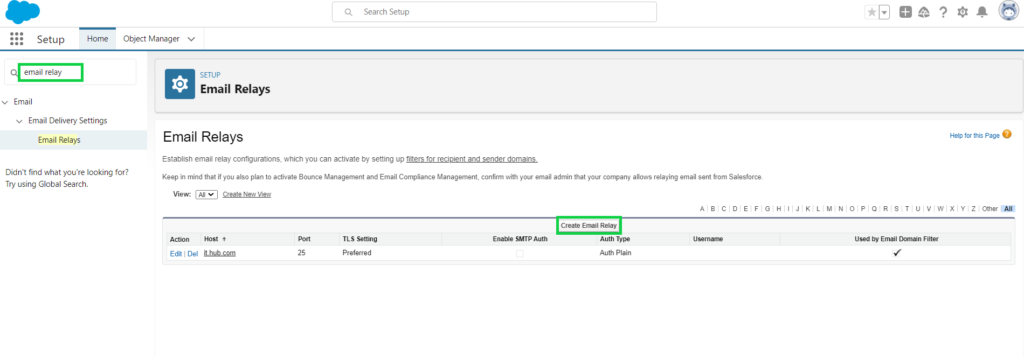
2. Enter the SMTP credentials provided by your provider into the appropriate fields.
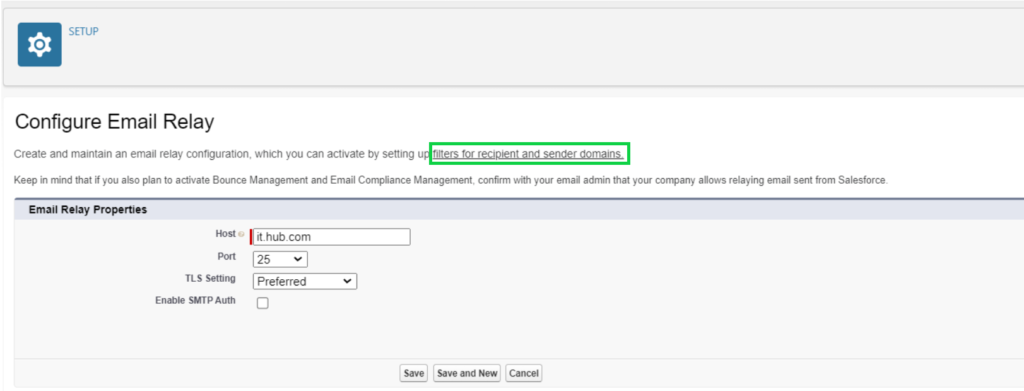
3. After completing the task, press the Save button and move on to establishing the email domain filter.
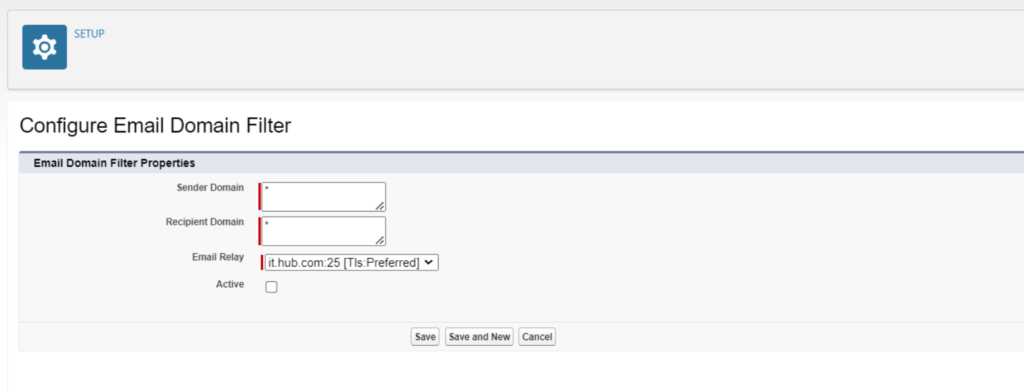
Suggestion: Maintain the asterisk in the Sender and Recipient Domain fields to enable sending from your registered Salesforce domain to any recipient domain.
4. Click the box adjacent to “Active” to enable the relay service, then proceed to click “Save” to confirm your preferences.
Keep in mind that the following outlines are merely the basic procedures for activating and configuring email relay within Salesforce. In the subsequent sections, we will delve into specific instructions and required credentials for configuring Mailtrap, Google, and Office 365 relay servers. Additionally, there is a dedicated segment on testing the email relay setup with Salesforce.
Limits on email relaying in Salesforce
There are certain limitation regarding email relays within Salesforce. To simplify these, we can categorize them into two groups: Functional constraints and Throughput constraints (pertaining to the quantity of emails you’re able to send).
Restrictions in functionality
- Access to Email Relays is exclusive to Professional, Enterprise, Unlimited, and Performance editions of Salesforce. Additionally, a limited utilization is possible with the CRM’s developer edition.
- Email Relays are accessible in regions spanning Japan, Asia Pacific, Europe, and the Americas, as evidenced by the available Salesforce IP addresses designated for transmission purposes.
- The sender’s email address must be affiliated with your business entity. In other words, the organization or domain associated with your Salesforce account must be the rightful owner of the email address in question.
- For compatibility with Salesforce’s email security standards, the SMTP server in use must align with Salesforce’s prescribed email security compliance. This typically entails configuring the server to support conventional email security protocols like TLS.
Restrictions on throughput
- When employing Email Relay in Salesforce, the daily email cap of 1000 per user within the Salesforce organization remains in effect.
- Furthermore, there exists an overall daily sending threshold of 5000 emails per organization.
For further details regarding the relay limits applicable to a particular edition or cloud solution, it is advisable to contact Salesforce support.
What advantages does Salesforce email relay offer?
There are numerous advantages, all tied together by a shared theme – relays offer heightened control and adaptability within your email strategies. With Salesforce, you have the capability to configure numerous email relay servers.
As a result, you can anticipate more consistent conversions, along with enhanced campaign oversight and segmentation of recipients.
Nevertheless, in outlining the advantages below, we presuppose that you utilize a dependable SMTP provider prioritizing delivery and email server protection. If not, you likely rely on a team of proficient developers to support a bespoke SMTP server.
Let’s delve into specific aspects to better grasp how relays can impact your email operations in Salesforce
Compliance Logging:
Numerous businesses must adhere to compliance regulations concerning email management. Typically, they’re required to log and archive all outgoing emails and their content for a designated period. Employing an email relay, especially an external SMTP, facilitates automatic logging of these records. Essentially, this action aids in meeting government regulations by ensuring clean and comprehensive email documentation, thereby saving time except for occasional maintenance tasks. Moreover, it streamlines data retrieval processes.
Spam Filter Mitigation:
By relaying outbound emails through your servers from Salesforce, there’s a higher likelihood of them landing in recipients’ inboxes rather than spam folders. This elevated deliverability stems from relying on your own sender reputation instead of Salesforce’s, shielding your emails from any potential impact if Salesforce’s shared IPs are blacklisted.
Improved Email Security and Authenticity:
With emails routed through your SMTP, Salesforce merely serves as a relay, significantly reducing the risk of email forgery and spoofing. This setup effectively adds another layer of security, bolstering the authenticity of outgoing messages and increasing the likelihood of being perceived as a trustworthy sender. Consequently, leveraging relays can fortify your domain’s integrity and sender reputation. However, it’s crucial to note that ensuring a secure relay entails following specific technical protocols outlined in the Important Note section below the Mailrap tutorial.
Content Filtering and Data Governance:
By utilizing relays, you gain additional capabilities to implement content filters and scan emails for unauthorized data or content. This approach ensures that only sanctioned content is dispatched from your domains. Consequently, you can uphold proper data governance standards, mitigate security risks, and safeguard sensitive information.

